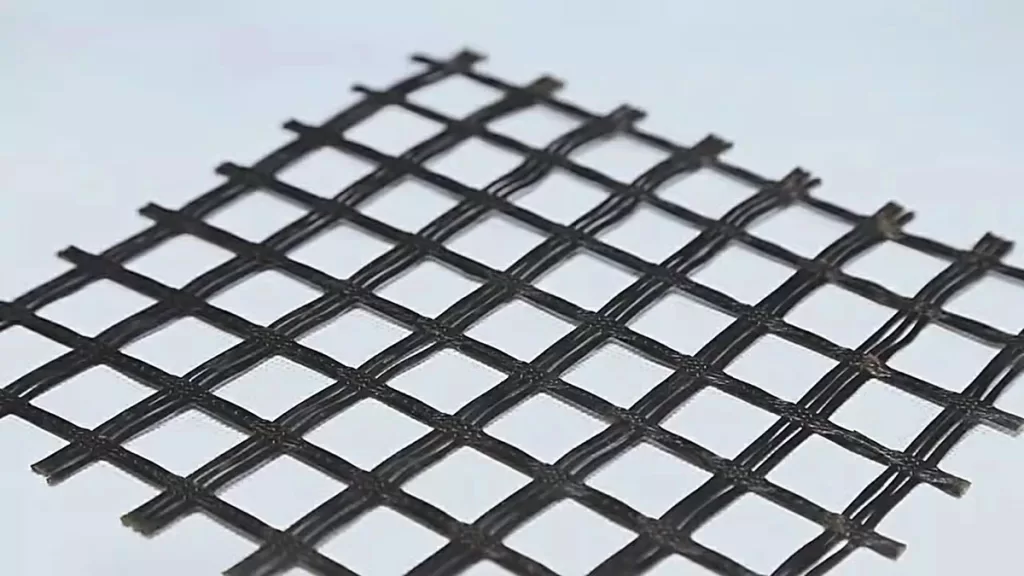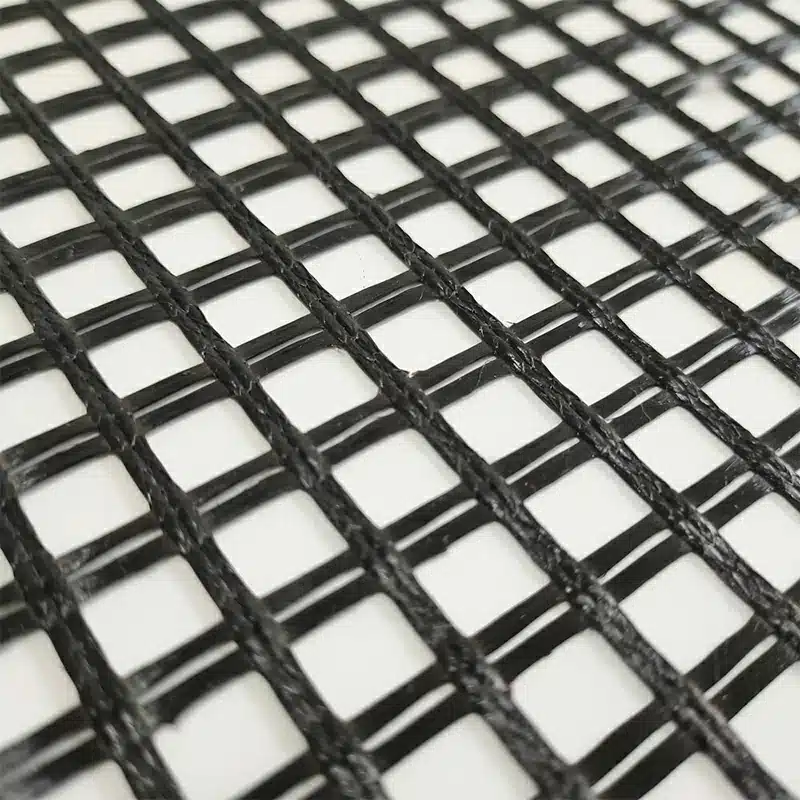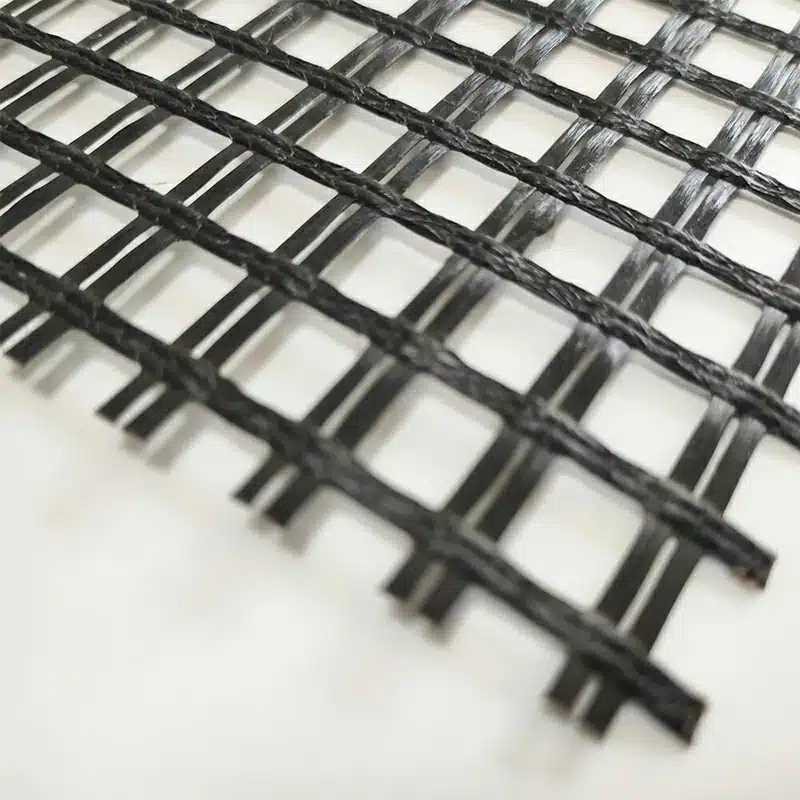+86-159 9860 6917
info@geofantex.com
geofantex@gmail.com
+86-400-8266163-44899
Polyester geogrid is a revolutionary construction material that plays a crucial role in fortifying and stabilizing infrastructure projects. Whether you’re working on road construction, retaining walls, or soil erosion control, polyester geogrid is a game-changer. This high-strength, synthetic grid effectively reinforces and distributes the load across a wide area, minimizing soil movement and preventing cracking, settling, or shifting of structures. With its exceptional tensile strength and durability, polyester geogrid not only extends the lifespan of projects but also reduces maintenance costs. Explore the versatile applications and benefits of polyester geogrid to ensure the longevity and reliability of your infrastructure endeavors.

What is polyester geogrid?
An excellent geosynthetic made from high-modulus polyester yarns, Polyester geogrid has a compact woven fabric structure. This high-strength geosynthetic material is composed of polyester fibers, expertly woven into a grid-like structure. The grid pattern provides exceptional tensile strength and stability to the material, making it an ideal choice for reinforcing and stabilizing various civil engineering and construction applications.
What is the use of polyester geogrid?
Polyester geogrid is an exceptional geosynthetic, crafted from high-modulus polyester yarns and characterized by a tightly woven fabric structure. This material serves a crucial role in enhancing soil stability and reducing erosion while also augmenting the load-bearing capacity of various construction applications. Common applications for polyester geogrid include:
- 1. Reinforcing Retaining Walls: Polyester geogrid is integrated into the soil to bolster retaining walls, effectively improving soil stability and reducing erosion while ensuring structural integrity.
- 2. Roadway Stabilization: This geogrid is utilized to enhance the load-bearing capacity of roadways, effectively reducing settlement and extending the lifespan of pavements, thus improving soil stability and reducing erosion.
- 3. Slope Reinforcement: In slope stabilization, polyester geogrid plays a vital role in preventing landslides and erosion, thereby enhancing soil stability and safety on hilly terrains.
- 4. Foundation Support: For buildings and structures, polyester geogrid is a key component in fortifying foundations, resulting in long-term durability and simultaneously improving soil stability and reducing erosion.
What are the Advantages of Using Polyester Geogrid?
The use of polyester geogrid in construction and civil engineering projects offers numerous advantages. Some of the key benefits include:
- Increased Load-Bearing Capacity: Polyester geogrid significantly improves the load-bearing capacity of soil and aggregate, ensuring stable and long-lasting structures.
- Reduction in Material Usage: Strengthening the foundation or soil reduces the need for additional construction materials, leading to cost savings.
- Enhanced Sustainability: The use of polyester geogrid promotes environmental sustainability by minimizing construction material consumption and extending the life of infrastructure.

What are the different types of geogrids?
Geogrids come in various types, each designed for specific applications. The main types of geogrids include:
- Uniaxial Geogrids: These geogrids excel in providing strength in a single primary direction, making them highly suitable for applications such as road stabilization, where reinforcing and improving load-bearing capacity are paramount.
- Biaxial Geogrids: Offering equal strength in both longitudinal and transverse directions, biaxial geogrids are versatile in various civil engineering applications. They find their place in projects involving retaining walls and slope reinforcement, where multidirectional strength is necessary.
- Triaxial Geogrids: Triaxial geogrids are engineered to provide three-directional strength, making them valuable for applications demanding enhanced load-bearing capacity and stability from all angles. These geogrids are often employed in projects where stability in multiple directions is essential.
- Geogrid-Geotextile Composites: Geogrid-geotextile composites offer a comprehensive solution by combining the strength and reinforcement of geogrids with the filtration and separation capabilities of geotextiles. These composites are employed in a wide range of applications, including retaining wall construction, slope stabilization, and soil reinforcement, providing a holistic approach to address various geotechnical challenges.
What material is Geogrid made of?
Geogrids are primarily constructed from high-strength synthetic materials. As the name suggests, polyester geogrid is fabricated using polyester fibers woven into a grid-like structure. Additionally, geogrid materials encompass a range of options such as polypropylene, polyvinyl alcohol, polyethylene, and more, each possessing distinct properties and versatile applications.



Get Free Sample
We’ll respond as soon as possible(within 12 hours)






















